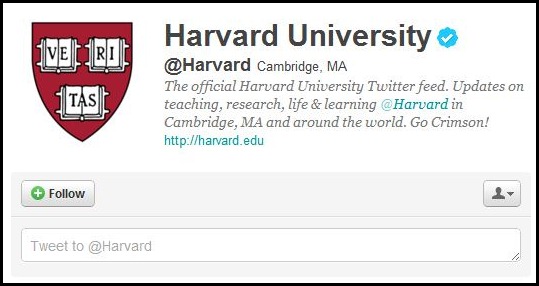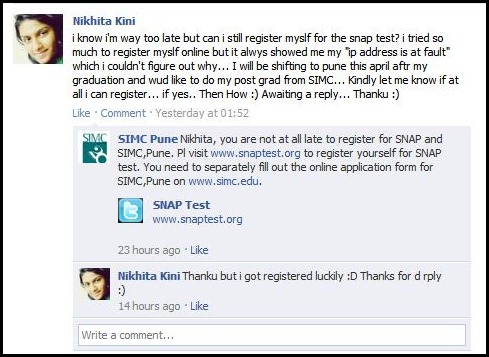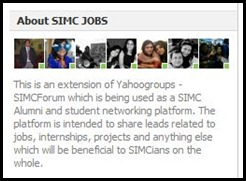The question about digital technology and its place in academia is one that is yet to be clearly answered. Understanding the benefits and costs of using digital technology is crucial when deciding if a particular tool, site or package may be used in universities.
Harvard University Twitter Handle
Universities are constantly exploring new ways to use social media to fulfill their missions of engaging and sharing knowledge with their constituents. Here we look at few ways in which universities can use social media without distracting the students.
Reaching out to the world
Social media tools like Facebook Pages have given universities an opportunity to speak to audiences on their own, reaching thousands of people interested in keeping up with news at the school and connecting with others on the social network.
Insight to the campus life
Perhaps the most common way, and the way in which most of us use social media, is sharing information about ourselves or things we find interesting. Because universities are educational institutions, they use social media to highlight their experts, as well as the resources they make available to the public/student. The point is to try to educate and provide a glimpse into what the institution is like.
Showcase work
Aside from sharing news and information, social media is often used in showcasing student and faculty work. That can be as simple as featuring photos taken by students through a photo album on the university’s Facebook page. Or it can take the form of an elaborate YouTube video by students as a class assignment. The idea is to let the general audience know what kind of work is being carried out in the university.
Getting Innovative
Rather than just use social media to promote specific events, some universities employ the tools to provide a place for the university community to engage and participate in the event as it is happening. This can be done through live streaming videos or collecting tweets during commencement through a common hashtag. This allows students and others to report on the event happenings as if they were being attended.
Hashtag Communications
Emergency Service
Emergencies and tragedies do happen. With the growing popularity of social media tools like Twitter, some universities are finding it easier and quicker to spread news during an emergency by complementing their e-mail and text alerts with a Tweet and a Facebook message or post. The University of Minnesota has an Emergency Notification group on Facebook that it uses to blast messages to its 2,300 members during a case of an emergency. It provides another way to reach students who spend a lot of their time there during critical situations.
Alumni Relations
Another key element of using social media is to keep the alumni body connected. With ever growing number of students passing out each year, keeping up with everyone becomes a task. Universities have utilized the services of groups and pages to get the alumni members stay connected. This not only helps connect various batches, it also gives opportunity to draw on resources that may be readily available to the university through its ex students database.
Providing Jobs
The key element of Universities is to provide jobs to the students. Some universities have used the social media platform to source out placements for students through the alumni members. Alma Mater is the best starting point for placements and a connected alumni cell with placement cell has made job search that much easier. The secret groups of Facebook seems to be a very popular tool not just to get fresh offers but also to source out the best job change for the members.
Job Forums
The benefits of social media to help students search for information, learn to communicate effectively and work collaboratively are well documented. There are resources to help academics consider the advantages of using social media in universities. They provide advice on using blogs, social networking sites, social bookmarking, collaboration, presentation and information management tools, and more for academic purpose. All it needs is for the universities to cease the opportunity and use the tool in the best possible manner.








